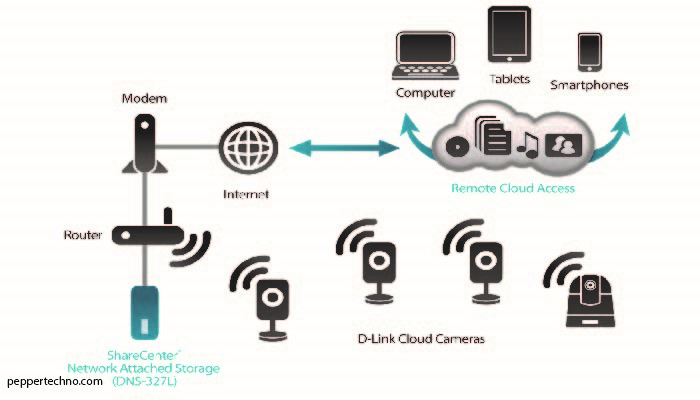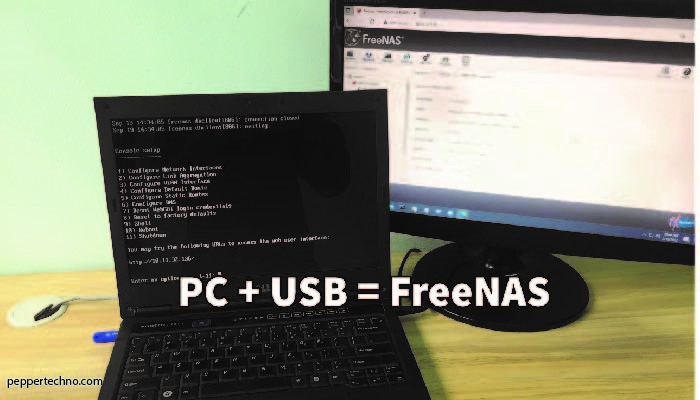Understanding the Integration of DNS and NAS in a Same PC
It is easy to have DNS and NAS in a Same PC. In the ever-evolving landscape of digital connectivity, the integration of diverse technologies plays a pivotal role in optimizing functionality. One such combination gaining prominence is the coexistence of DNS (Domain Name System) and NAS (Network Attached Storage) within a single PC. This article explores the advantages, challenges, and practical implications of having DNS and NAS functionalities seamlessly integrated into the same system.

DNS Unveiled: Navigating the Digital Map
The Core Functionality of DNS
DNS, often referred to as the “phonebook of the internet,” is a critical component of the web’s infrastructure. It translates user-friendly domain names into IP addresses, facilitating the seamless navigation of the internet. The integration of DNS into a personal computer introduces a layer of efficiency and control over network-related processes.
Local DNS and Its Significance
While DNS primarily operates at a global level, the concept of local DNS is gaining traction. Local DNS servers provide a dedicated service within a specific network, enabling faster domain resolution and reduced reliance on external DNS providers. This localization becomes particularly advantageous in environments with multiple connected devices, such as a home network.
NAS: A Personal Cloud at Your Fingertips
The Essence of NAS in Personal Computing
NAS, or Network Attached Storage, transforms a personal computer into a hub for centralized data storage and retrieval. It functions as a personal cloud, allowing users to access their files and media from any connected device within the network. The integration of NAS within the same PC that hosts DNS introduces a level of convenience and consolidation.
Streamlining Data Accessibility*
By merging DNS and NAS functionalities, users can streamline data accessibility. The DNS server can efficiently handle local domain resolution, while the NAS component ensures that relevant data is readily available to all authorized devices on the network. This integration simplifies the process of managing and accessing files within a local environment.
Advantages of DNS and NAS Integration
Enhanced Speed and Efficiency*
The integration of DNS and NAS on the same PC contributes to enhanced speed and efficiency in data access. Local DNS resolution reduces the time taken to translate domain names into IP addresses, while NAS ensures that the requested data is readily available, minimizing latency and optimizing the user experience.
Centralized Control and Management*
Having DNS and NAS functionalities within a single PC provides centralized control over network-related processes. This centralized approach simplifies configuration, monitoring, and management, allowing users to have a comprehensive overview of their network activities and data storage.
Seamless Synchronization*
Integration facilitates seamless synchronization between DNS and NAS. As DNS resolves domain names locally, the NAS component can seamlessly integrate with the local domain structure, ensuring that file access and data retrieval occur in harmony with the DNS resolution process. This synchronization streamlines network operations and enhances overall system coherence.
Implementation Challenges and Considerations
Resource Utilization
While the integration of DNS and NAS offers numerous advantages, it also raises considerations regarding resource utilization. Both DNS and NAS functionalities can be resource-intensive, and careful planning is required to ensure that the system has adequate processing power and storage capacity to handle concurrent demands.
Security Implications
Security considerations are paramount when integrating DNS and NAS within a single PC. Both services involve critical aspects of network management and data storage, making the system susceptible to potential security threats. Implementing robust security measures, including firewalls, encryption, and regular software updates, becomes imperative to safeguard against unauthorized access and data breaches.
Network Architecture and Scalability
The integration’s success hinges on the existing network architecture and its scalability. As the number of connected devices and data volume increases, the network’s ability to handle concurrent DNS resolutions and NAS requests becomes crucial. Scalability planning ensures that the integrated system can adapt to the evolving demands of the network environment.
Practical Applications and Use Cases
Home Networks and Multimedia Storage
In a home network setting, the integration of DNS and NAS is particularly beneficial. Local DNS resolution enhances the efficiency of web browsing and device communication, while NAS provides centralized multimedia storage. This combination is ideal for households with multiple users and a diverse range of connected devices.
Small Business Environments
Small businesses with limited IT infrastructure can leverage the integration of DNS and NAS to streamline network operations. The centralized control and management afforded by this integration simplify IT administration, making it easier to maintain and monitor network activities.
Development and Testing Environments
In development and testing environments, the integration of DNS and NAS can enhance efficiency. Developers can simulate real-world network conditions by locally resolving domain names, while NAS facilitates the seamless retrieval and storage of test data. This integration streamlines the development and testing process, leading to faster iterations and improved software quality.
Future Trends and Innovations
Edge Computing Integration
As edge computing continues to gain prominence, the integration of DNS and NAS within a single PC aligns with the principles of decentralized processing. This trend is particularly relevant in scenarios where rapid data access and low latency are crucial, such as Internet of Things (IoT) applications and real-time analytics.
Machine Learning and Automation
The integration of machine learning algorithms and automation into DNS and NAS functionalities represents a frontier of innovation. Predictive analytics and automated resource allocation can optimize performance, adapt to changing network conditions, and enhance the overall user experience.
Conclusion: Pioneering Connectivity with DNS and NAS Integration
The integration of DNS and NAS within a same PC marks a pioneering approach to connectivity and network management. This fusion of technologies streamlines data access, enhances efficiency, and provides centralized control over network-related processes. While implementation challenges and considerations exist, the advantages of this integration position it as a transformative solution for home networks, small businesses, and development environments. As technology continues to evolve, the integration of DNS and NAS exemplifies the synergy achievable by harnessing the power of diverse functionalities within a unified computing environment.



